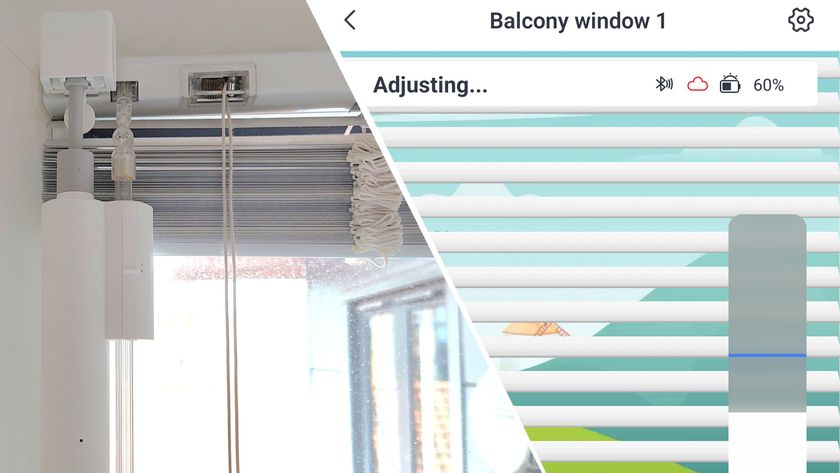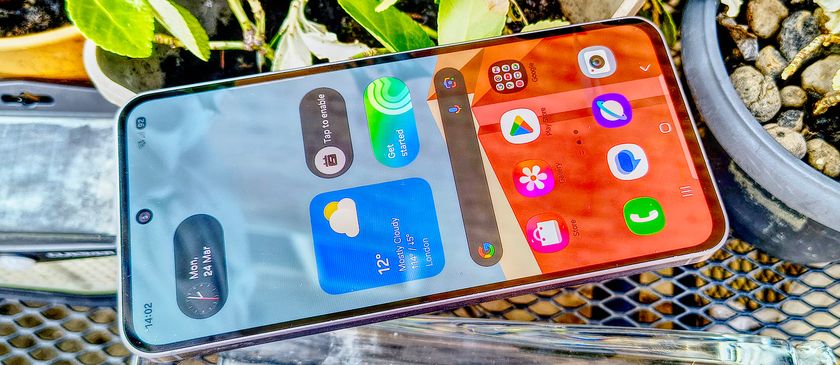Why you can trust TechRadar
- Comes with a whopping 5,000mAh battery that promise,s at the very least, one full day for all users
- Casual users will get days of battery life out of this phone
- Cameras aren’t perfect, but offer good utility, many, many modes and better-than-average performance for the price
The battery and camera are two aspects of a phone that we usually don’t hold our breath for when it comes to budget or even mid-range options. Funny enough, that’s exactly where the Asus Zenfone 3 Zoom puts its focus.
Starting with the battery, there’s a behemoth inside of this one: 5,000mAh, to be specific. It won’t win any awards for thinness, but it’s remarkable that Asus was able to fit a battery of this capacity inside of an 8mm smartphone. For some reference, the Samsung Galaxy S8 features a 3,000mAh battery and the LG G6 comes with 3,300mAh.
Now, numbers don’t mean a thing if they don’t translate to, in this case, longer than average battery life. Thankfully, this large battery showed it stuff during our time with it.
If you’re someone who uses your phone on more of a touch-and-go basis, as in not sitting down to play games or surf the web for long while, the Zenfone 3 Zoom will last a remarkably long time. During a three-day weekend in which we used the camera for more than an hour and browsed for just as long, the battery only discharged roughly 15%. Asus tells us that this phone can last 40 days in standby mode and based on our findings, we believe it.
Thanks to the Snapdragon 625, which showed off its efficiency capabilities in the Moto Z Play, we’re seeing that put to use even better here with a much larger battery. Under the stress of playing a 90-minute HD video stored locally, this phone only discharged 10% of its battery, leaving 90% left in the bucket.
While it’s particularly skilled at staying alive, the Zenfone 3 Zoom eventually will die. But fortunately, bringing it back up to speed doesn’t take all that long. Considering its large capacity, we’re impressed that it can charge to 11% in 15 minutes. At the hour mark, it was filled halfway. For most people, that’s about a full day of use. Give it roughly another hour and a half and it was back at 100%. Sure, it’s not the fastest charging device out there, but given that even a miniscule charge can give back hours of use is good in our books.

Camera
- Software isn't the most intuitive out there, but is feature-packed
- Pro mode lets you tweak to your heart's desire
- Android Nougat bringing iPhone 7 Plus-like Portrait Mode soon
We’ve finally arrived at the main event, the cameras. On the back of the phone is a dual-lens camera setup that has the specs to push it above your everyday smartphone camera, especially those that we usually see in this price bracket.
The main 12MP Sony IMX362 sensor comes with an impressive f/1.7 aperture that should produce some great low-light shots, but the results here are just passable. Shooting at night or indoors is something that few smartphones have come close to figuring out, so it’s not surprising to see the Zenfone 3 Zoom fumble this.
Additionally, Asus has included 4-axis optical image stabilization and 3-axis electronic image stabilization, the same sort of tech that we’ve seen in action on several flagship models to keep blur and shaky videos to a minimum. You can see this in action below.
Right next to the primary sensor is another 12MP sensor that offers 2.3x optical zoom and 12x digital zoom. The Zenfone 3 Zoom’s predecessor can do 3x optical, but even with the slight dip in this model, it still offers more zoom without distortion than its competitors. The iPhone 7 Plus offers 2x optical zoom, just for reference.
If you’re into shooting video, you can do so at up to 4K resolution (24 frames per second) on this phone. If you prefer greater fidelity, the Zenfone 3 Zoom can do 1080p at 60 frames per second.
Flipped over to the front, Asus’ photo-centric phone features a 13MP Sony IMX214 sensor backed by an f/2.0 aperture and screen flash. You can also shoot 1080p footage with this camera.
Asus has packed this phone with a load of effects that let you express yourself in some interesting ways no matter which of the cameras you use. Of course, it has a manual mode that lets you tweak the ISO, exposure value and color balance of each photo that you take. It even lets you switch between the rear lenses depending on how you want to capture your subject.
Other settings are predictable, but nevertheless welcome inclusions, like slow motion, time lapse, beautification, low light and more. Its GIF capture mode stands out as an easy and fun way to shoot a quick animation to send off to friends.
But enough about specs and features. What can this phone actually do? Well, take a look below.






For the price, the Asus Zenfone 3 Zoom produces pretty good results. While many of the photos don’t feature the lush contrast and delicate color balance that, say, the Google Pixel can pump out, I’d have no reservations about making this my primary camera in a pinch, unless I was shooting in low-light.
Compared to other phones in its price range, the Zenfone 3 Zoom puts out quality images and offers dollops of customization for people who like to have their hand in every last detail.
Cameron is a writer at The Verge, focused on reviews, deals coverage, and news. He wrote for magazines and websites such as The Verge, TechRadar, Practical Photoshop, Polygon, Eater and Al Bawaba.













